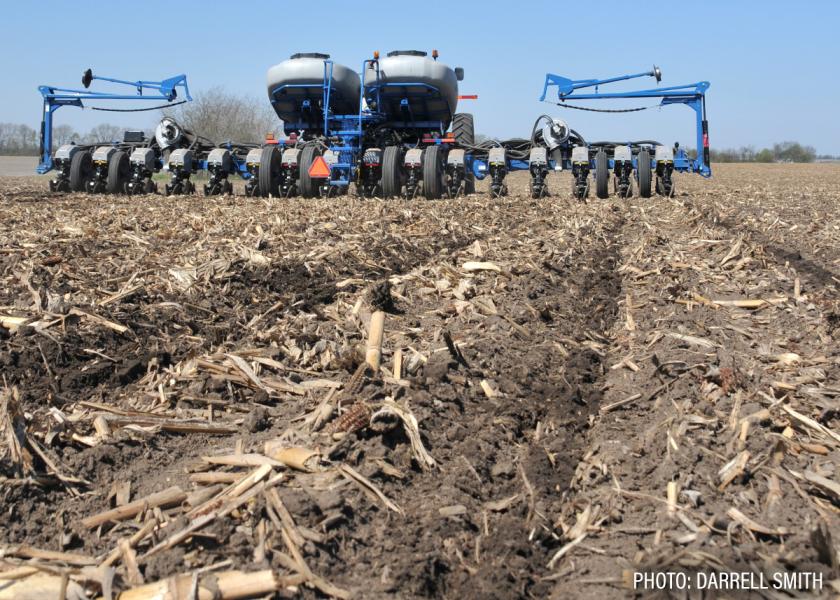Prepare Now for a Successful 2024 Soybean Season

“Plant early for optimum yield” is a common refrain soybean growers hear from agronomic experts today. If that’s your plan for 2024, here are three reminders to help you achieve success next season.
1. Consider preparing fields yet this fall.
“Leave the field surface level so you’re ready to plant when conditions become fit next spring,” advises Ken Ferrie, Farm Journal field agronomist. “Along with that in strip-till or vertical tillage, consider applying a fall burndown herbicide yet this year to have a clean field in the spring.”
One thing Matt Duesterhaus, Crop-Tech Consulting research agronomist, recommends to no-till growers is to evaluate whether they’ll have herbicide carryover from this season. “It’s been a pretty dry year, and if it stays dry this fall and winter, there’s potential for that problem,” he says.
2. Plant a mix of maturities to mitigate risk.
While many long-term forecasts point to a dry 2024 season, don’t assume that will be the case.
“To avoid having all your soybeans caught by the same adverse weather, mix up maturity groups,” Duesterhaus says. “That way you won’t have all your soybeans at the R2 reproductive stage at the same time or ready to harvest at the same time.”
Ferrie advises spreading soybean maturities much like you would with corn hybrids: plant 30% early varieties, 50% midseason maturity groups and 20% late season to mitigate risk from adverse weather.
3. Be ready when conditions are right.
It could be a week earlier or several. “The perfect time may be when you feel it’s too cold and/or wet to plant corn,” Ferrie says. “Soybeans can handle those conditions with seed treated for insects and disease.”
That was the case for Rob DeFauw, who farms near Geneseo, Ill. His start date for soybeans this year was toward the end of April, which was considerably sooner than when he typically starts planting soybeans — around Mother’s Day.
“Everybody’s trying to push the envelope a little earlier,” DeFauw said in the spring. “When the weather’s fit and the ground’s fit, you better be ready to go, too, and put them in the ground.”
Ferrie cautions farmers to plant only the number of soybean acres early that they’re willing to replant.
However, he says more farmers are willing to roll the dice on early soybeans because of the yield premium.
“In our trials, as we look at early planting, you get more nodes, of course, going before the solstice, but if you get flowering ahead of the solstice, 7 bu. to 10 bu. (additional yield) is definitely not out of reach,” Ferrie says.







